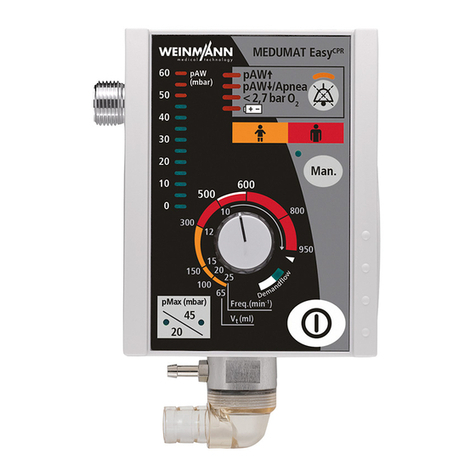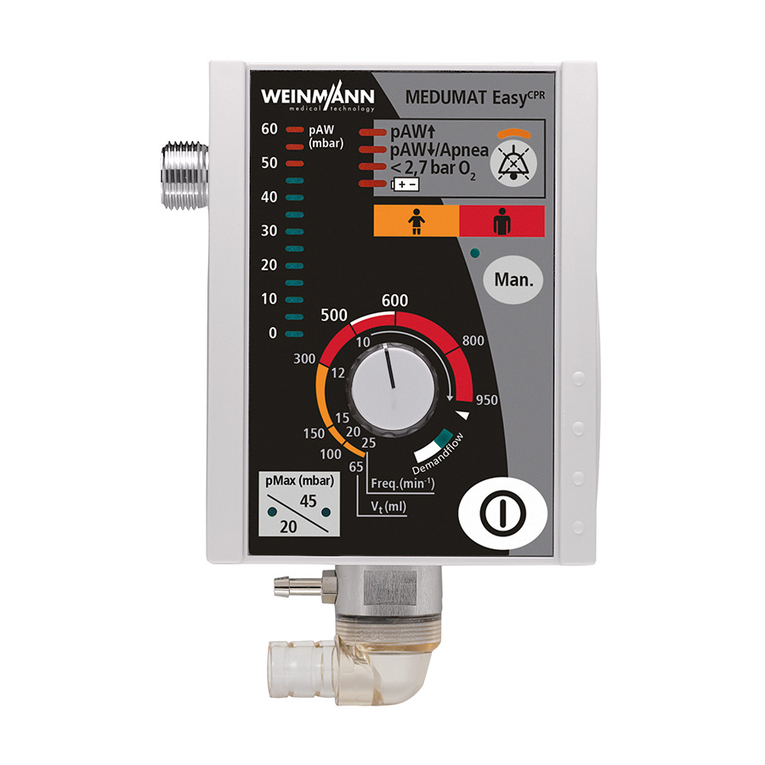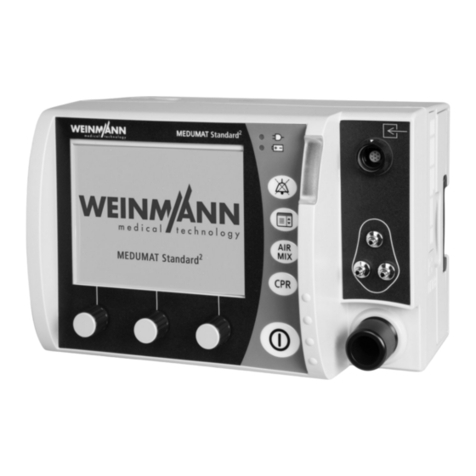
Contents
1. Description of unit . . . . . . . . . . . . . .7
1.1 Intended use . . . . . . . . . . . . . 7
1.2 User qualification . . . . . . . . . . 7
1.3 Functional description . . . . . . . 7
2. Safety instructions . . . . . . . . . . . . . .9
2.1 Safety regulations . . . . . . . . . . 9
2.2 Contraindications . . . . . . . . . 11
2.3 Side effects . . . . . . . . . . . . . 12
2.4 Special markings on the unit . 13
3. Setting up the unit . . . . . . . . . . . . .15
3.1 Positioning and connecting
the unit . . . . . . . . . . . . . . . . 15
3.2 Fitting the mask. . . . . . . . . . . 16
3.3 Accessories . . . . . . . . . . . . . 16
4. Operation . . . . . . . . . . . . . . . . . . .19
4.1 BiLevel ST 22 startup . . . . . . . 19
4.2 Activate/deactivate the auto
switch-on. . . . . . . . . . . . . . . 20
4.3 Setting Soft start . . . . . . . . . . 21
4.4 Setting the humidifier . . . . . . . 22
4.5 After usage . . . . . . . . . . . . . 23
4.6 Traveling with BiLevel ST 22 . . 24
5. Hygienic preparation . . . . . . . . . .25
5.1 Intervals. . . . . . . . . . . . . . . . 25
5.2 Cleaning. . . . . . . . . . . . . . . 26
5.3 Disinfection and sterilization . . 28
5.4 Multiple patient use . . . . . . . . 29
6. Functional check . . . . . . . . . . . . . .30
6.1 Intervals. . . . . . . . . . . . . . . . 30
6.2 Execution. . . . . . . . . . . . . . . 30
7. Troubleshooting . . . . . . . . . . . . . .34
7.1 Malfunctions . . . . . . . . . . . . 34
7.2 Alarms . . . . . . . . . . . . . . . . 35
8. Maintenance . . . . . . . . . . . . . . . . .38
8.1 Intervals . . . . . . . . . . . . . . . . 38
8.2 Filter change. . . . . . . . . . . . . 39
8.3 Change the
pressure measurement hose . . . 41
8.4 Disposal. . . . . . . . . . . . . . . . 42
9. Scope of supply . . . . . . . . . . . . . .43
9.1 Standard scope of supply . . . .43
9.2 Accessories . . . . . . . . . . . . . 43
9.3 Replacement parts . . . . . . . . .46
10. Technical data . . . . . . . . . . . . . . . .47
10.1Pneumatic diagram . . . . . . . .50
10.2Safety distances. . . . . . . . . . . 50
11. Warranty . . . . . . . . . . . . . . . . . . .51
12. Declaration of Conformity . . . . . . .52
13. Index . . . . . . . . . . . . . . . . . . . . . .53
































